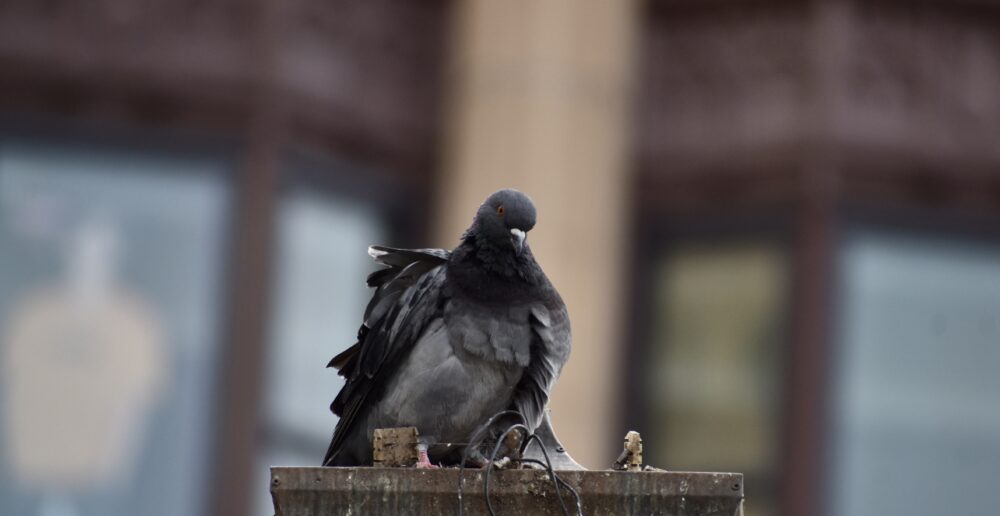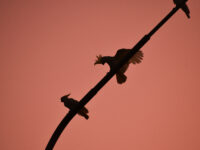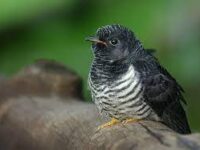In the state of Massachusetts, it is punishable by imprisonment to frighten a pigeon. This law may seem surprising to most modern-day Bay Staters, many of whom abhor the seemingly infinite number of so-called “rats with wings” multiplying across their urban areas, but to people from the not-so-distant past, this law is a way to protect one of humanity’s greatest companions.
First domesticated roughly 10,000 years ago in the Mediterranean region, the ancestors of the modern pigeon would more likely be nicknamed a “flying dog” than a “flying rat.” Humans bred them as a reliable food source, a tool for long-distance communication, and as pets distinguished by their noble beauty and athletic prowess. Most notable for their unsurpassed homing abilities, pigeons carried messages across vast expanses of land from roughly 1000 BCE until 1948 CE. In the 1960s, people falsely attributed pigeons with spreading disease at a higher rate than other animals, beginning the downward spiral of their reputation to their modern-day status as detestable pests.
Ancient Mesopotamians first saw value in pigeons as a domesticated food source. In fact, it was for this reason that colonists, in need of a reliable food source, later brought pigeons to the Americas in the 1600s. Upon living with the creatures, early inhabitants of the Mediterranean region soon recognized their beauty, intelligence, athleticism, and unique skill set. Some pigeons were bred for their wide array of fabulous colors; the black, gray, and white feathers many pigeons possess today are a direct result of those colors being chosen for their visual appeal. Others were selected for their speed and endurance, being used for sporting events such as the still-practiced pigeon racing.
Pigeons possess the unique ability to utilize the sun, their memory, and Earth’s magnetic field to travel back to specific locations over long distances; the pigeons bred for this homing skill were named “carrier pigeons.” The Roman, Mongol, and Persian empires all famously used carrier pigeons to spread information to political and military officials stationed across the known world. The practice of breeding carrier pigeons for wartime communication continued through World War II. Thirty-two pigeons — the most of any animal — were awarded the PDSA Dickin Medal for their gallantry during the war, the highest award granted to an animal for its military service. By the start of the Cold War, however, advancements in communication technologies had rendered carrier pigeons obsolete.
“First domesticated roughly 10,000 years ago in the Mediterranean region, the ancestors of the modern pigeon would more likely be nicknamed a ‘flying dog’ than a ‘flying rat.’”
No longer essential for long-distance communication, pigeons’ veneration began to fade. Their reputation fell further in 1963, when a New York Times article reported a link between pigeons and two human deaths, leading American officials to push the narrative that pigeons were harmful to human health. Although the article was later shown to have no concrete scientific basis, this stigma would follow pigeons into the modern day, opening the door for a billion-dollar pigeon pest control industry. This narrative of pigeons as disease-spreading vermin has permeated through society in large part due to misinformation from pest control corporations to promote their products. However, pigeons spread diseases, deadly and otherwise, to humans at a lower rate than common house pets and chickens. Many people also detest pigeons for their noise and droppings. Yet, these factors are more noticeable due to their large population, rather than an inherent character of the species. These reputational black marks on pigeons as a species have led to their downfall in prestige, and today, many people treat them as flying rodents that infest our world’s cities.
“There are many opportunities for utilizing pigeons’ intellect for societal good, especially in the realm of pattern recognition.”
Despite pigeons’ low esteem, some scientists are still making efforts to recognize their incredible intelligence. There are many opportunities for utilizing pigeons’ intellect for societal good, especially in the realm of pattern recognition. In a study conducted by a team of researchers from the University of California, Davis, pigeons developed the ability to differentiate between normal and cancerous tissue samples at an accuracy that rivaled trained humans, boasting an 85% success rate after 15 days. At airports, pigeons could be trained to reduce the chances of terrorist attacks, alerting security officers to items associated with terrorism and even the faces of known terrorists.
Past humans venerated the pigeon for its utility and beauty. Today, we look down on the pigeon as a representation of filth and pestilence. By learning from the storied history of one of humanity’s most cherished animal partners, perhaps we can amend the relationship between pigeons and humans for the benefit of both species.






